Show:
Understanding Home Automation Software And How To Use It
You’ve got all your smart home devices, but you want to tie the whole system together. In that case, you’re going to need some home automation software to get yourself going.
Below we’ll discuss everything you need to look for when choosing your home automation software.
And as a bonus, you’ll also get to see some of the best home automation software the market has to offer:
What To Look For When Choosing Home Automation Software

There’s an abundance of home automation software out there, and most of it is quality stuff. The big problem is you can’t say that for all the software out there.
So, to make sure you don’t get caught out with a shoddy piece of software, here are some things you need to consider before you make a buying decision:
Is The Software Upgradable?
With technology evolving every day, it’s essential your software can keep up with the times. New equipment comes on to the market all the time, and if it’s something you want, the software needs to be able to adapt.
But, how can you tell if a piece of software is going to adapt to new devices coming out?
Well, it’s actually easier than you may expect. The easiest way is to look at past versions of the software.
If there haven’t been many improvements since it launched, there’s a good chance they will not upgrade much in the future.
Is The Software User Friendly?
No matter what category of techy person you fall under, one of the main things you should be looking for is its usability.
A user-friendly system means you get the most out of the software without the headache of trying to get everything to work.
Before you go out and purchase new home automation software, you should take a look at some user ratings. This way, you can see if normal human beings can actually use the software.
Another thing to look out for would be their customer care; at least if you are stuck, they can still assist you.

Is The Software Tried And Tested?
Every now and then, you get a piece of software that hits the ground running with no faults. But that’s pretty rare.
Usually, it takes years for software to really come into its own. This is why looking for software that has a little time under its belt is beneficial. This way, you avoid any minor teething problems new companies have.
Again another great way to find out more about the software is by reading customer reviews.
Does The Software Look Versatile?
One of your primary areas of concern should be the software’s versatility; Why? Because home automation is usually made up of multiple devices, all using different sources.
The software you use is the backbone of your automation system, so you need to make sure it’s versatile enough to deal with it.
Check Out The Security
One of the biggest concerns about home automation is security, and it’s understandable. Having the wrong security behind you could end in disaster.
Wireless devices are very vulnerable to threats because the signal can easily be picked up. This means a hacker only has to be outside your house to gain access.
Making sure your home automation software uses a high-graded security system will ensure you don’t become one of the statistics.
The Best Home Automation Software On The Market Today
Hopefully, the section above has given you the tools you need to make an informed decision about how to find home automation software without getting stung.
If you’re still unsure where to turn, keep reading; below are some fantastic pieces of software you can use to control your smart home gadgets:
Home Assistant
For a really high-grade home automation controller, things can get pretty expensive. So, if you’re on a budget, you might be looking for another option.
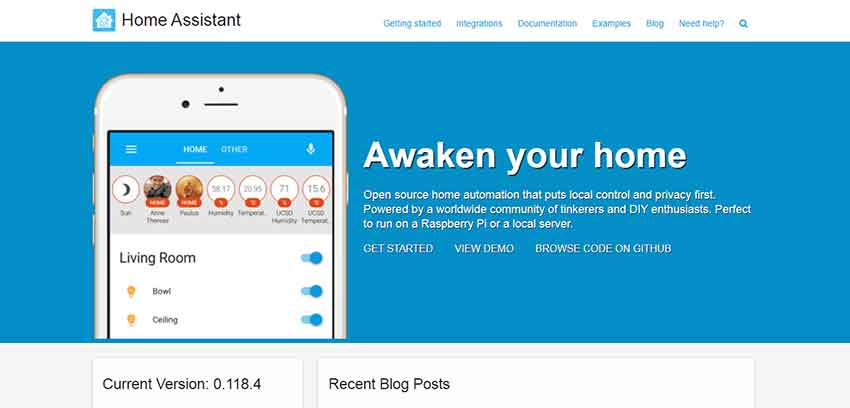
Home Assistant is the software you’ve been searching for. It’s an open-sourced, web-based program used to automate your home.
The downside to using this platform is, you’ll have to do a little bit of coding yourself. And if it’s something you enjoy, what better system could you use.
The software uses Python and can be installed on to a Raspberry Pi. This means you can get a home hub for less than $50.
OpenHAB
OpenHAB is one of the most prominent players when it comes to home automation software. It’s an open-source community with half a million posts on their forums about home automation.
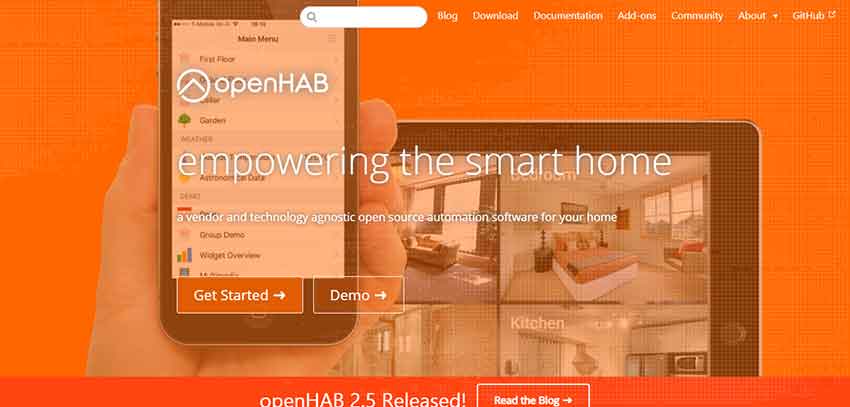
The software works as the center of your smart home to ensure all platforms are working correctly.
It can be integrated with many smart devices; they claim to work with over 1,500 smart products.
This software uses JAVA script and is entirely free to use; it can be downloaded to a local operating system.
Calaos
This is one of the French players on the market and has a huge community. Although not as large as the previously mentioned software it can still hold its own.
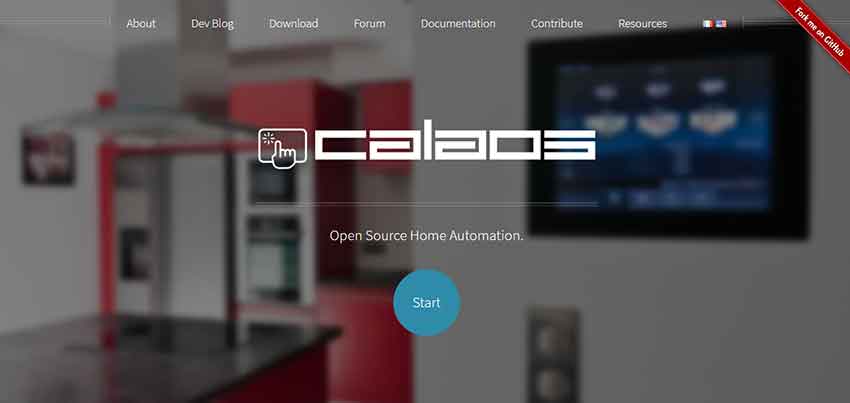
The software is free to use and lets you control and monitor your smart home devices. The whole system is super easy to install and can be downloaded into the Raspberry Pi.
One of the best things about this, in particular, is that they offer a vast range of apps across multiple platforms.
PiDome
The PiDome software is specifically designed to be used with Raspberry Pi. The software is excellent for all kinds of users, including developers and beginner users.
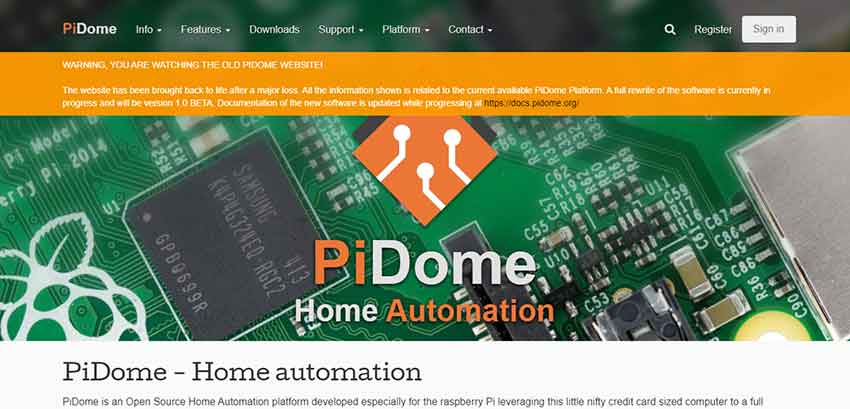
They provide their users with a flexible API that can be programmed to meet the user’s needs. For programming, the software uses the languages JAVA and JAVAscript.
They use an easy to navigate dashboard, making it great for beginner users. But the best thing is they don’t compromise on the power the software holds.
Domoticz
The software is very straight forward and easy to use; some would say it’s a minimalist system. But that doesn’t mean it’s not perfectly capable of monitoring all the different smart home components.

Their website offers a straightforward guide on how to get the system up and running, which makes it super easy for beginners.
Overall, Domoticz has a great dashboard and an easy-to-understand database. To make things better, the online community is super friendly.
Smarthomatic
This open-source software was designed to build the framework of your very own home network; this can be used to control a network of sensors and actuators.
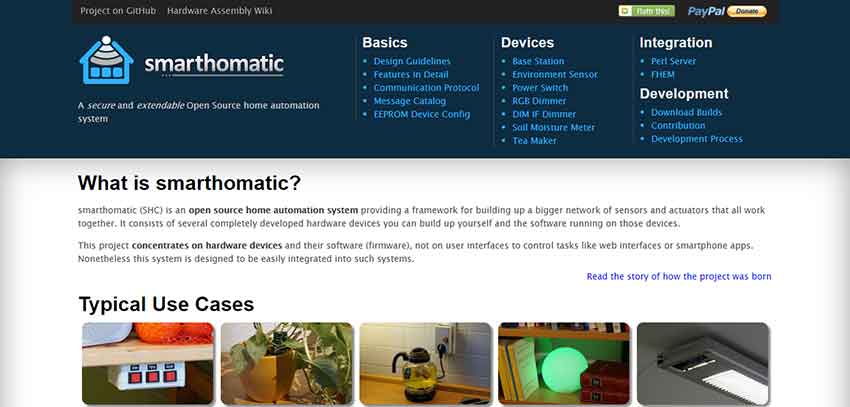
The benefits of this software are the affordability and how easy it is to set up. It also uses AES encryption, which helps protect your home from attack.
Overall, this software is pretty neat but seems to aim for simpler automation.
Rounding Up
If you want to build a stable home automation base, you need to have the right software backing it up. If you ask yourself these five questions:
- Is it secure?
- Is it upgradable?
- Is it versatile?
- Is it tried and tested?
- Is it user friendly?
If the answer is yes to all these questions, you know you’ve got a pretty solid reason to back it.
If you haven’t got time to do the research, any of the six home automation software companies mentioned in this article will have you covered.

 Return to Previous Page
Return to Previous Page








